Sceptics make wild claims about the number of deaths caused by lockdown, but there's no evidence to support them. The vast majority of excess deaths last year were directly caused by ("from", not "with") covid-19. So what do ONS and PHE data and academic studies actually show?
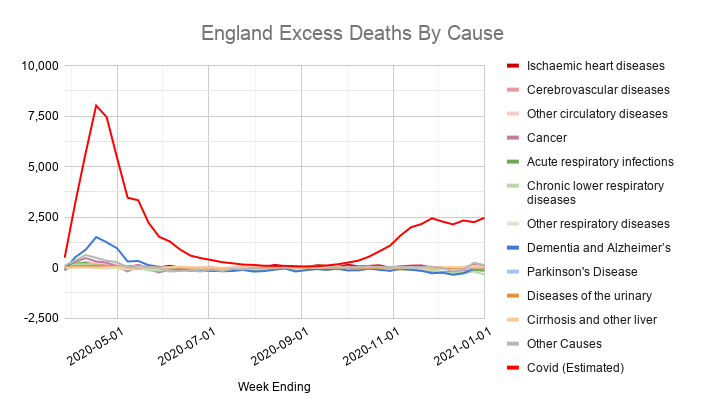
Removing covid deaths, you can see more clearly that despite 10 months of varying levels of restrictions, the only time there have been large numbers of non-covid excess deaths was during the first wave. Mostly elderly care home residents registered as dying from dementia.
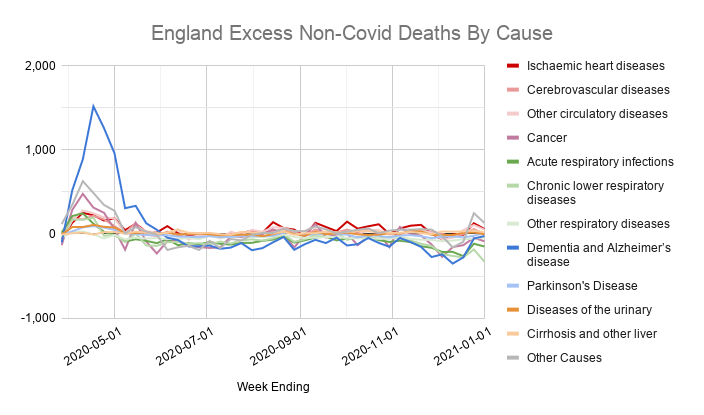
We now know that many elderly people suffering from covid experience confusion and delirium, often without a cough or fever. This is obviously easily mistaken for other, pre-existing conditions. The same thing is thought to happen with flu each winter.
bbc.co.uk/news/health-54…
So while some excess dementia deaths may be due to issues in care homes and lack of hospital care, given the almost total lack of testing in care homes in April, many are likely to be undiagnosed covid. This was raised by the ONS as early as June.
ons.gov.uk/peoplepopulati…
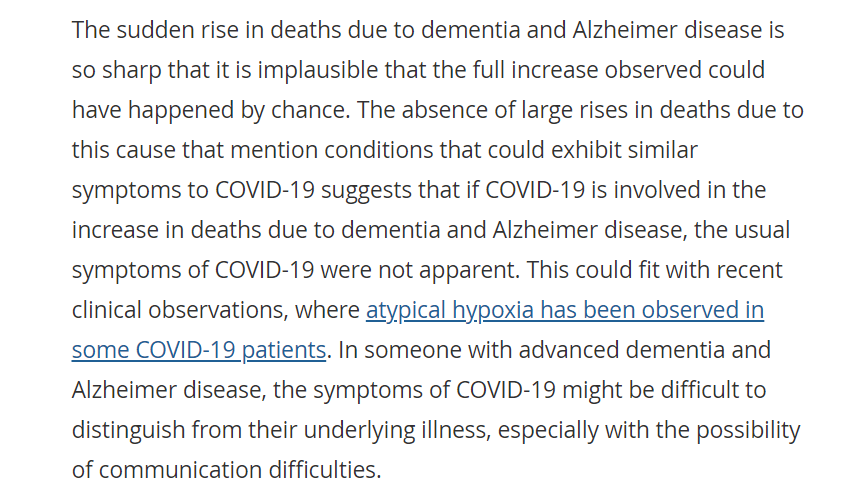
And a more recent study by Manchester University suggests that MOST "non-covid" excess deaths in care homes during the first wave may actually have been undiagnosed covid. Which would add as many as 10,000 more deaths to the official covid death toll.
manchester.ac.uk/discover/news/…
Another sign is that there haven't been ANY excess deaths due to dementia and Alzheimer's since the first wave. This is despite varying restrictions on visiting care homes over the last few months, which you would expect to have had a negative impact on vulnerable residents.
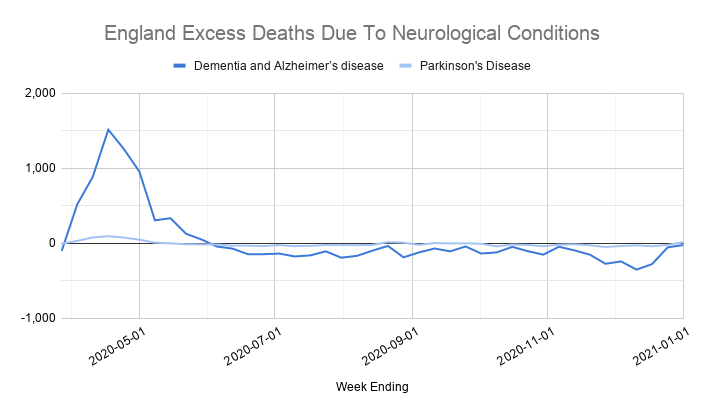
Finally, a recently released report to Sage estimated that there could be 22,000 more non-covid excess deaths in care homes over winter, based on the first wave's 10,000 "non-covid" deaths. Thankfully they seem to be wrong. So whatever happened in April, it isn't happening now.
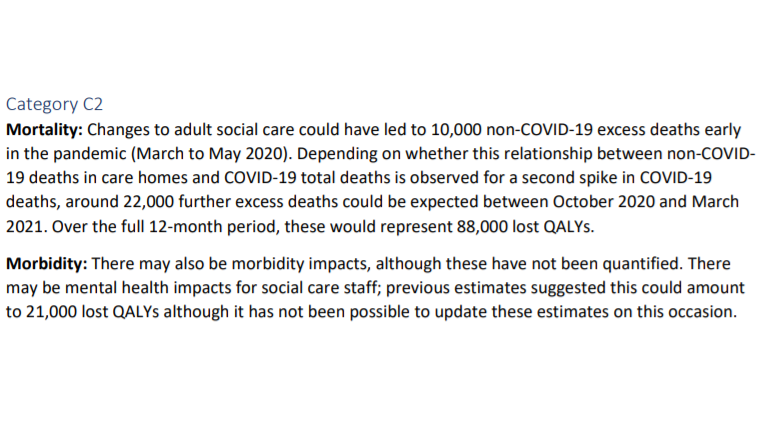
The other main cause of non-covid excess deaths is disruption to hospital care. This includes the (in hindsight over zealous) bed clearing operation in the first wave, delays to treatment, staff and bed shortages due to covid, and people not going to A&E for genuine emergencies.
For example, the Sage report estimates 4,000 excess deaths were caused in the first wave by people being unwilling or unable to access emergency care. But they also estimated a further 10,000 deaths over the winter. Again, there's thankfully no sign yet of this happening.
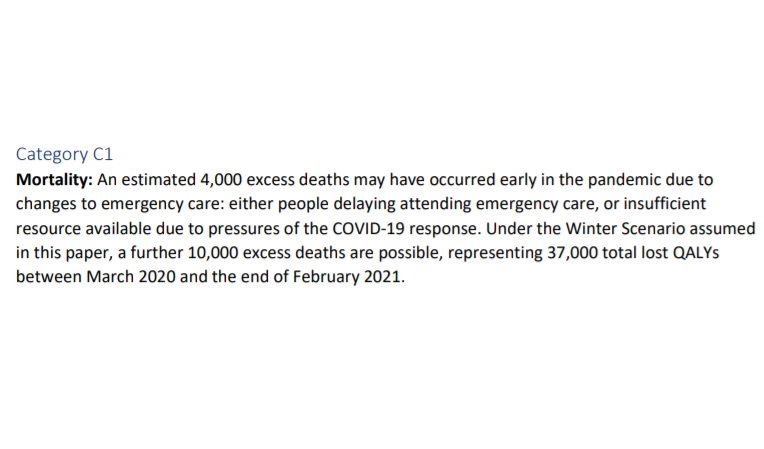
Possibly related to this, circulatory diseases are the only cause seeing any significant numbers of excess deaths throughout the year. There were 5,707 excess deaths due to these causes (2,090 involving covid). About half were in April, the rest spread over the next 8 months.
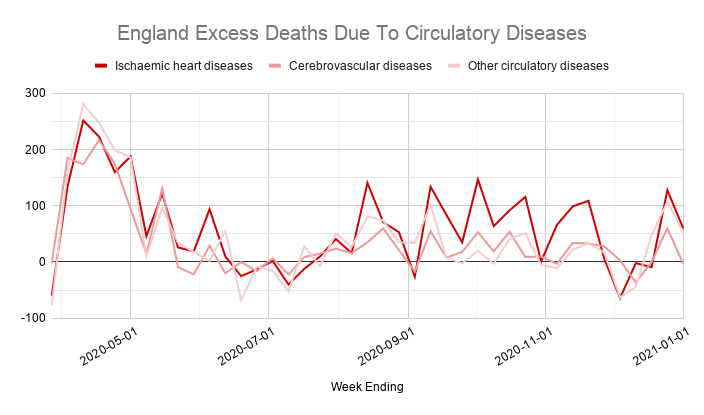
There's a spike in urinary disease excess deaths in April (439, of which 52 involved covid) but only 114 since then (which is less than the 193 that involved covid). Liver diseases have seen small numbers of excess deaths all year, but only 735 in total (254 of them with covid).
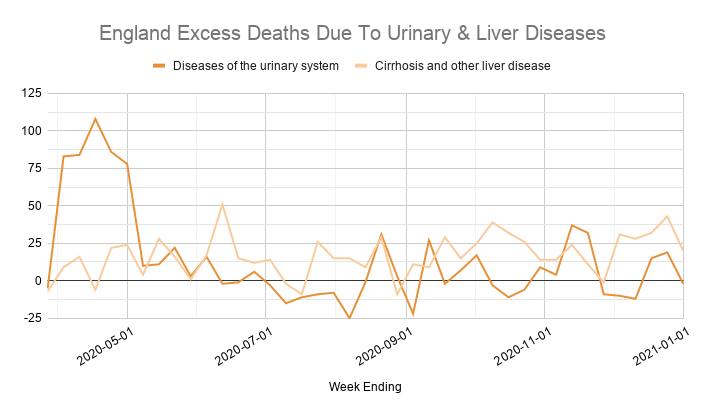
The wide ranging "other causes" also shows a spike in the first wave, but then nothing. The much smaller spike at the end of the year is (at least partly) due to bank holidays (which cause reporting delays) being spread across the weeks differently in 2020 than in most years.
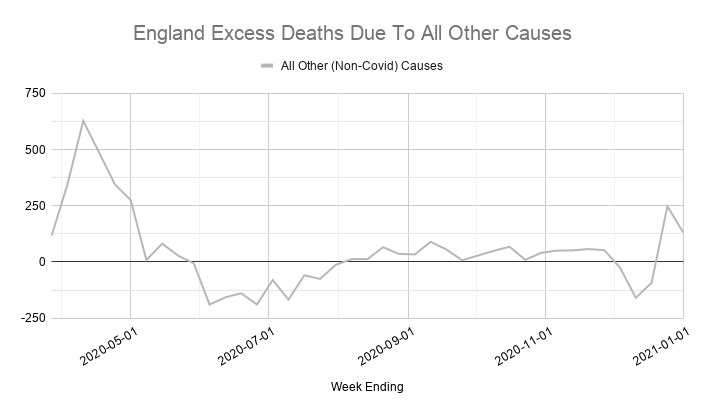
And again, the ONS think that at least some of the "other causes" deaths in the first wave, reported as "symptoms, signs and ill-defined conditions" (which includes general frailty and old age), may have been undiagnosed covid.
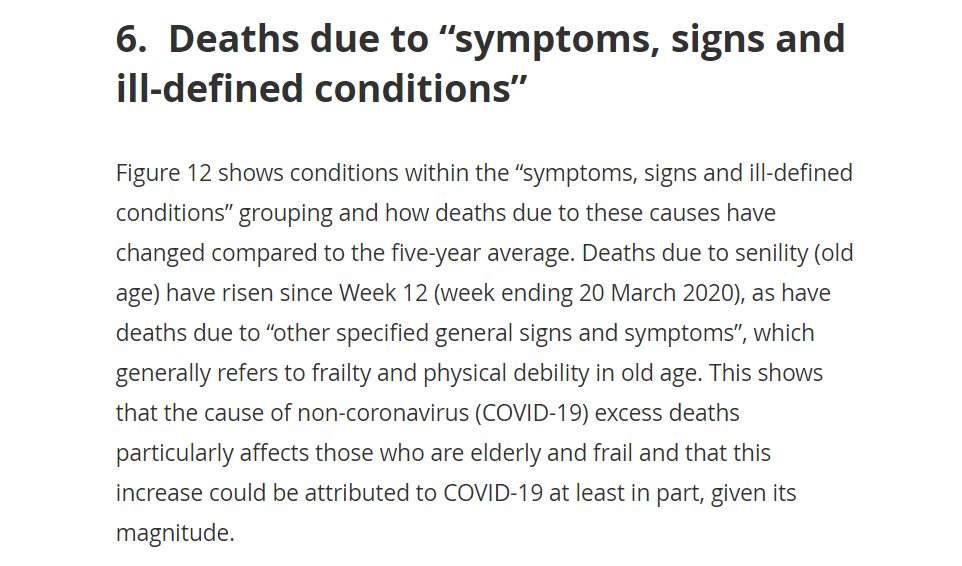
The other issue related to hospitals is access to routine screening and surgery. The report to Sage estimates there may be 8,600 excess deaths due to disruption to elective surgery, and 1,400 due to delays to cancer treatment and diagnosis, but spread over several years.
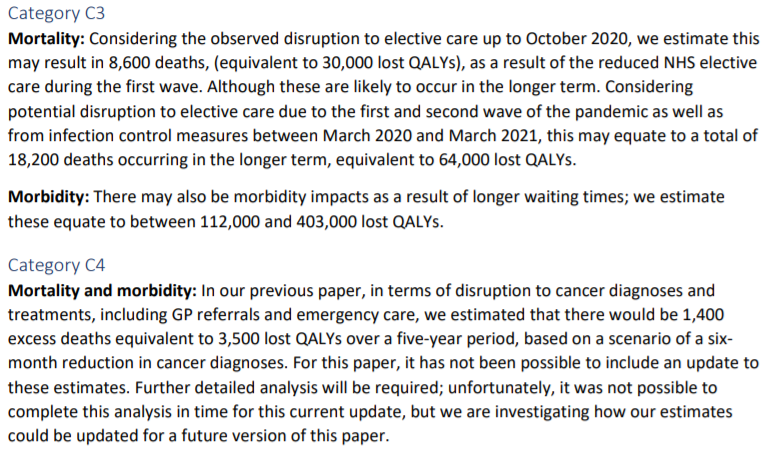
They estimate many more deaths due to disruption over the winter (bringing the total to 18,200). But again, this seems to be based on mistakes made in April. And as we've just seen, the main thing causing disruption to the NHS this winter was the large numbers of covid patients.
Obviously there won't be much sign of these longer term impacts yet, but there were 1,388 excess deaths reported due to cancer in April (at least 374 of them involving covid). There haven't been any more since then though.
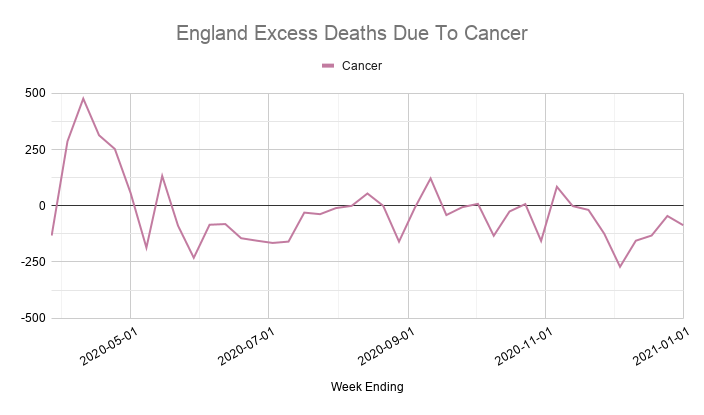
So most "non-covid" excess deaths are NOT due to the lockdown itself, as sceptics imply, but due to issues in the NHS during the first wave, and undiagnosed covid. And there's no sign of excess non-covid deaths in later national or regional lockdowns, when the NHS was more open.
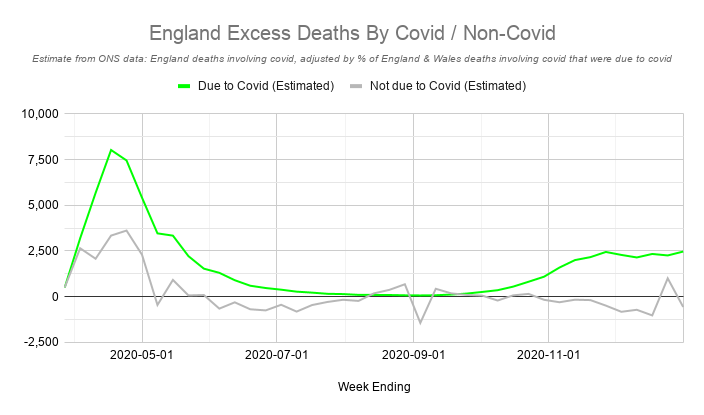
Meanwhile non-covid respiratory diseases were below average all year (even before covid), apart from a bump in April that's probably undiagnosed covid. The big drop this winter is at least partly due to other diseases being affected by measures taken to slow the spread of covid.
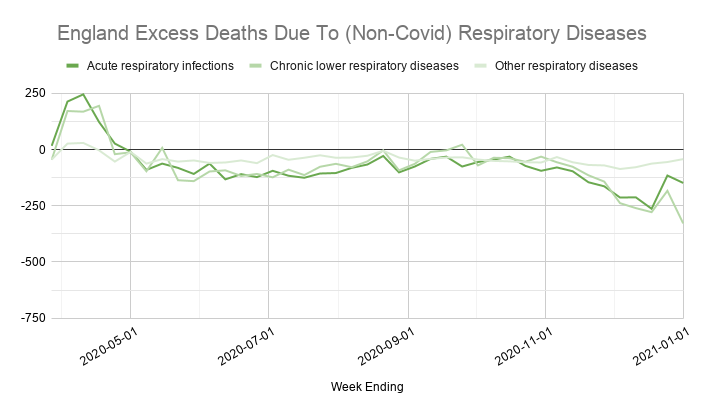
In fact the report to Sage estimates the impact of restrictions so far is 4,000 LESS non-covid deaths, thanks to everything from fewer accidents and better air quality to a reduction in other infectious diseases. So even ignoring covid, lockdowns saved more lives than they cost.
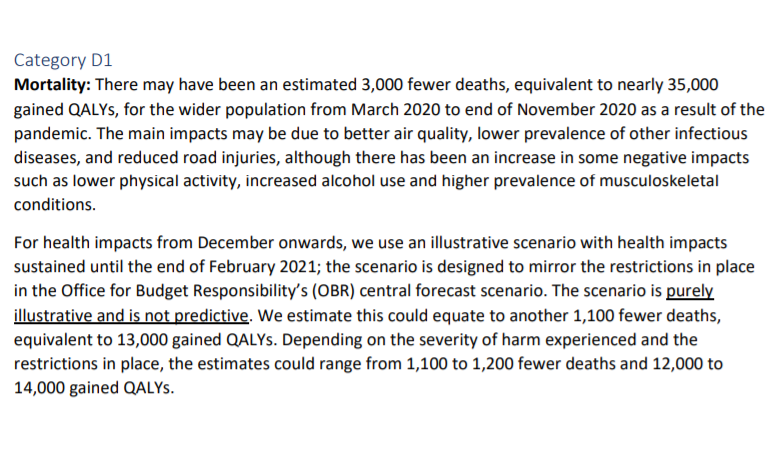
Lockdown sceptics also point to increased deaths at home as a sign that lockdown has been killing people. But these remained high over the summer, despite most restrictions being lifted then, and haven't increased much as new restrictions were introduced in the last few months.
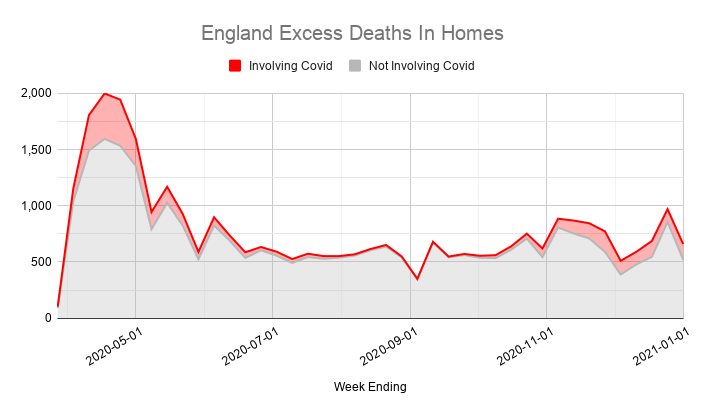
It's noticeable that the number of excess deaths in homes almost exactly mirrors below average non-covid deaths in hospitals. It's hard to say without more detailed data, but it looks possible that some people who would normally have died in hospital sadly died at home instead.
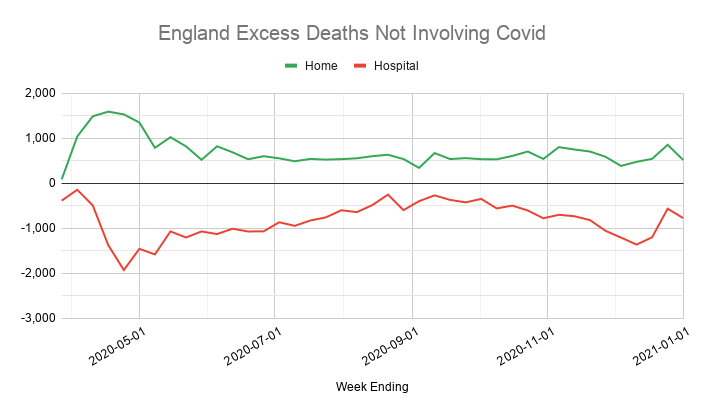
Looking at other settings, most excess deaths in hospitals and care homes throughout the pandemic have involved covid. It's also worth noting that deaths in hospices were below normal. Again, maybe some people sadly died at home rather than receiving hospice care?
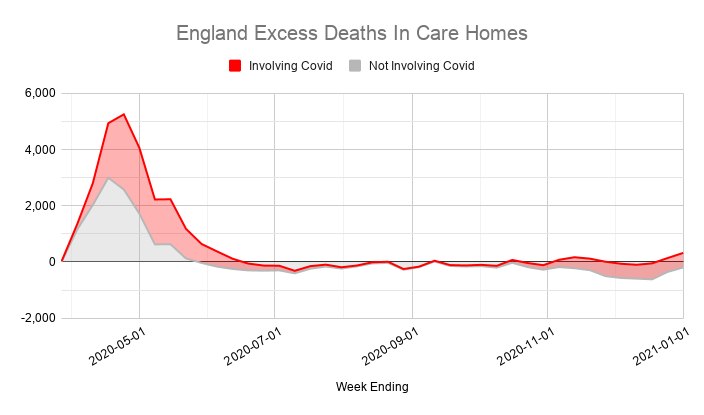
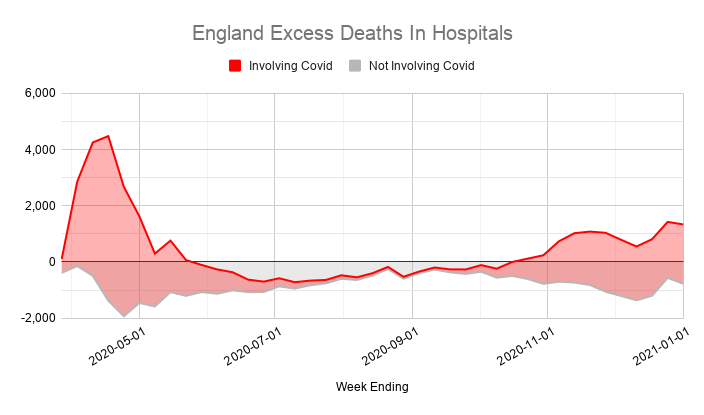
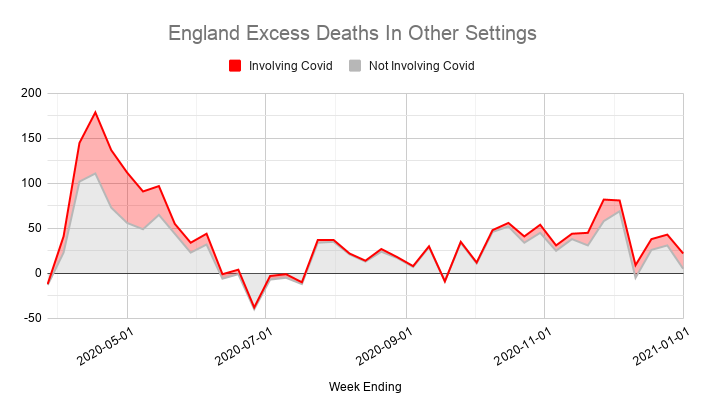
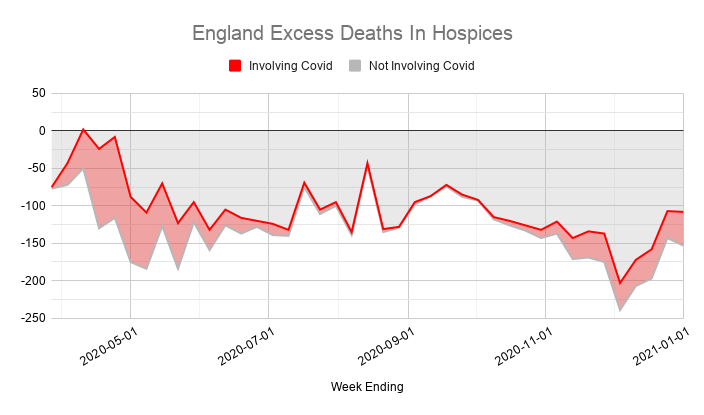
Another common claim is that lockdown is killing the young, whereas covid mostly kills the elderly. Again, there's no evidence of this. There are no excess deaths overall in people under 45, and most of the excess deaths in the 45-64 age group involved covid.
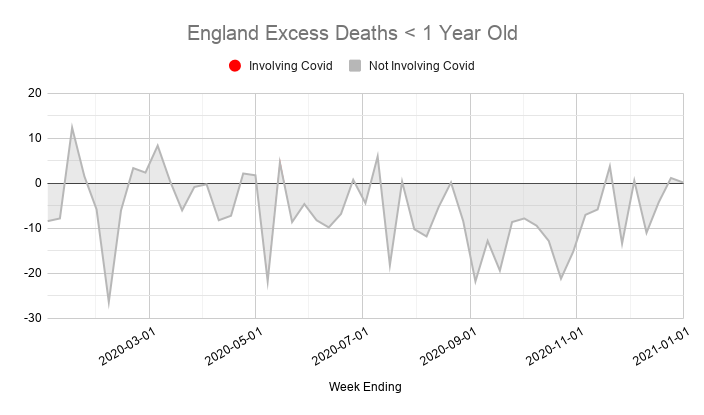
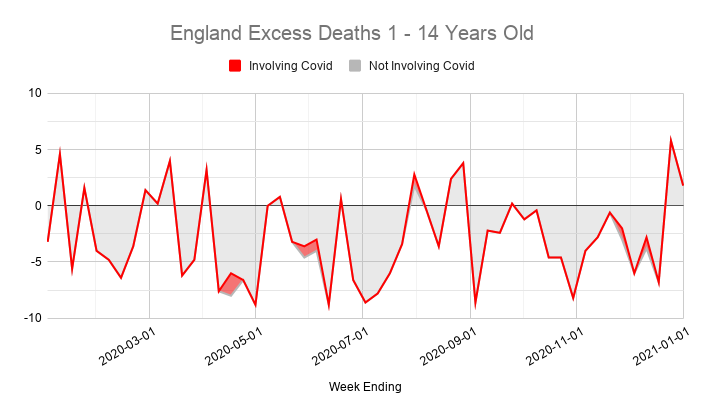
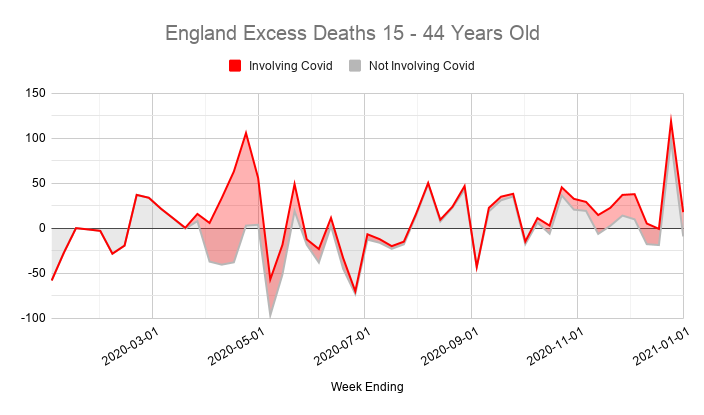
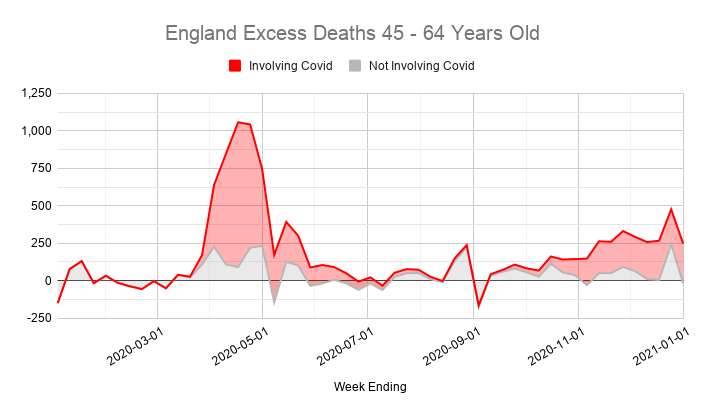
Covid (like most things) disproportionately kills the elderly, and sadly that's reflected in the excess death figures. The vast majority of excess deaths last year are in people over 65, and most of those involved covid.
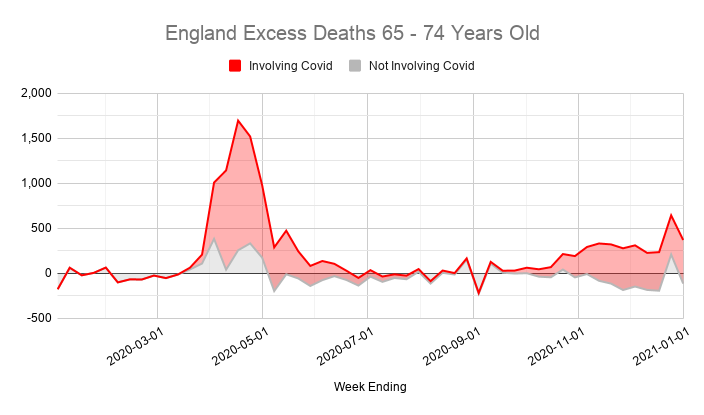
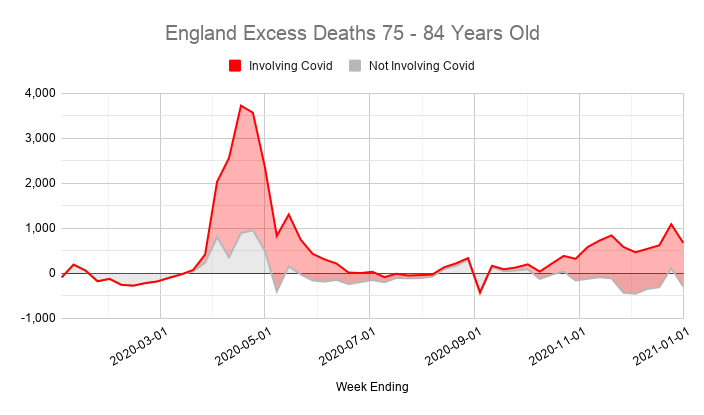
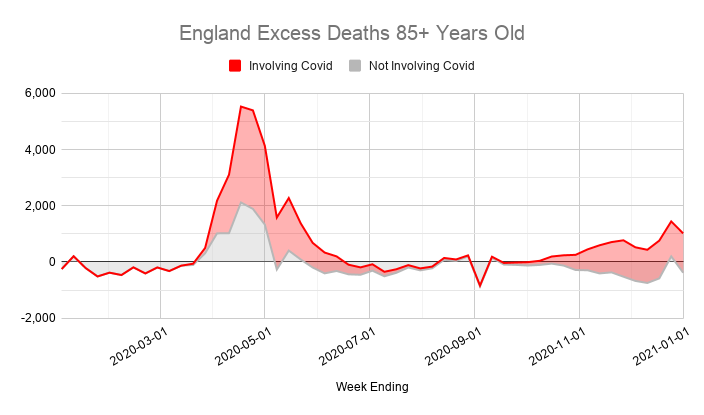
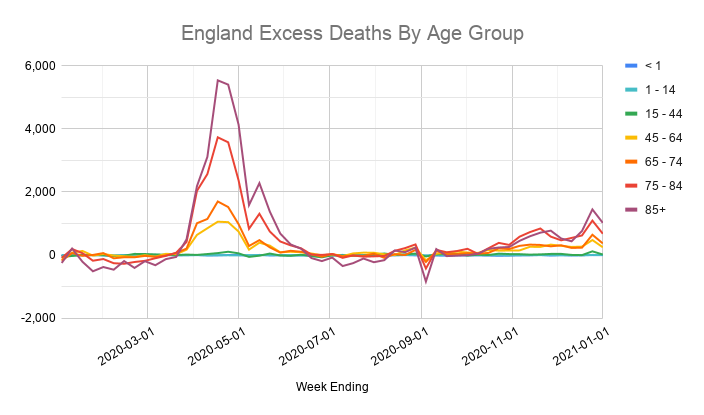
So: - Most excess deaths are due to covid - There are no excess deaths in the young - Only circulatory diseases show significant excess deaths - Many non-covid excess deaths in April seem to be undiagnosed covid - Excess deaths at home may be displaced from hospitals and hospices
The other aspect the report to Sage looks at, which is impossible to judge yet, is long term deaths caused by reduced life expectancy as a result of the recession. Their latest estimate is that this might cause 40,000 excess deaths. But that's spread over a 50 year period.
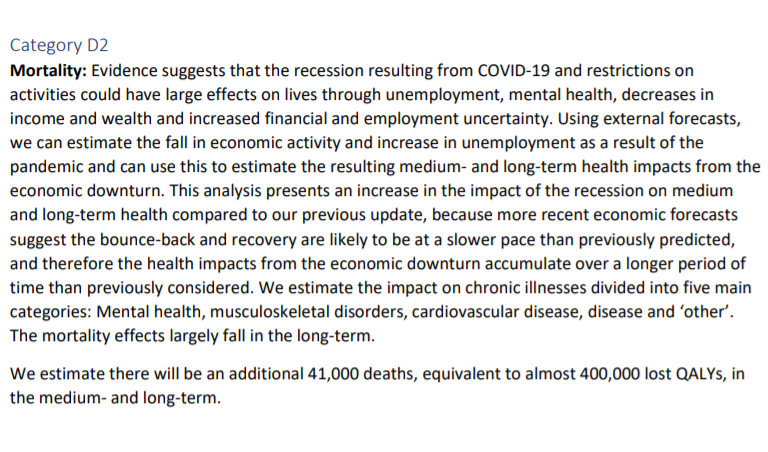
Most countries have had a recession due to the pandemic, regardless of what measures they took. Ours is worse than most because our economy is more reliant on the service sector, and we locked down too late and did too little to avoid further lockdowns.
edition.cnn.com/2020/08/12/eco…
Lots of other countries locked down earlier and harder than us and managed to get the disease under control faster, and as a result had much milder recessions AND less deaths. We ended up with the worst of both worlds by trying to walk a tightrope between health and the economy.
Sources: Sage direct & indirect impacts of covid-19 report: https://t.co/aMvVYPr4Fu PHE excess mortality data: https://t.co/EXTPbTrMKq ONS deaths data: https://t.co/OFZYlstb6E ONS weekly deaths reports:
assets.publishing.service.gov.uk/government/upl…
fingertips.phe.org.uk/static-reports…
ons.gov.uk/peoplepopulati…
ons.gov.uk/peoplepopulati…
